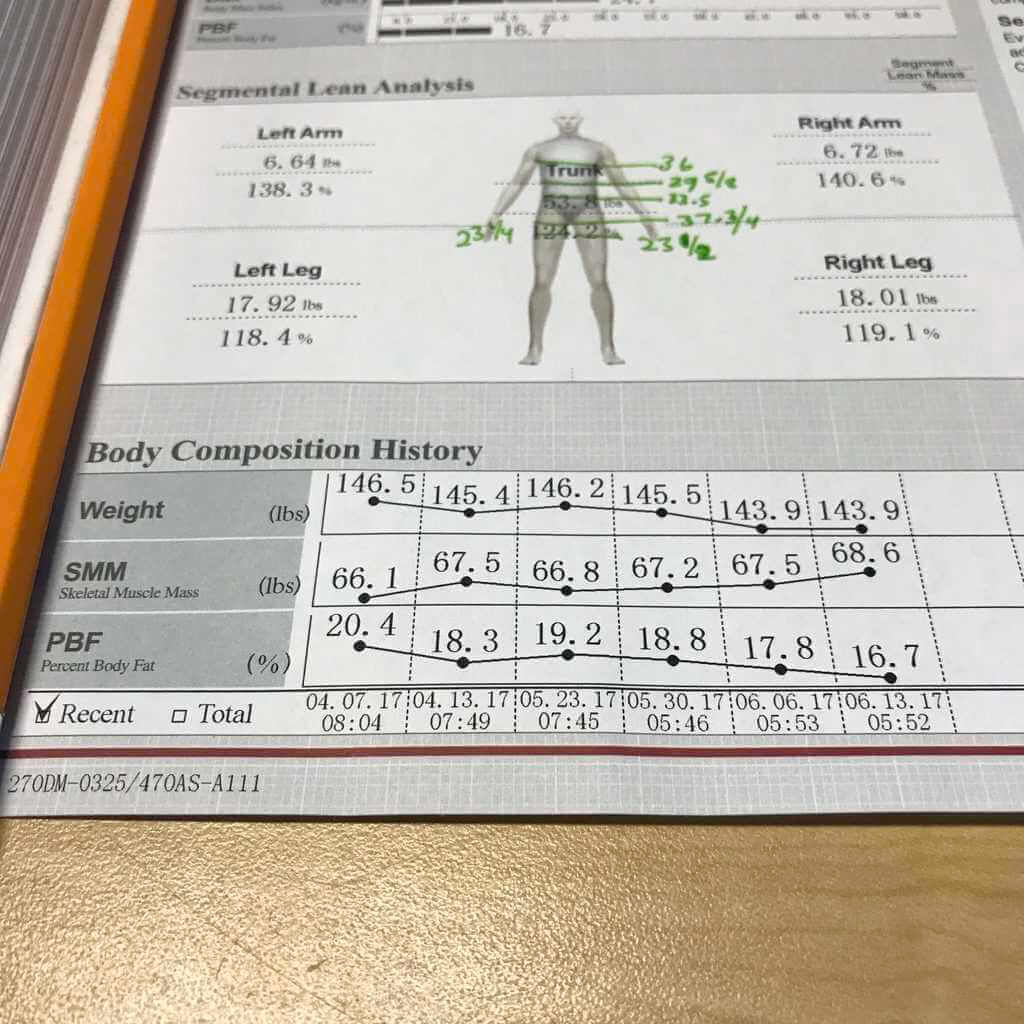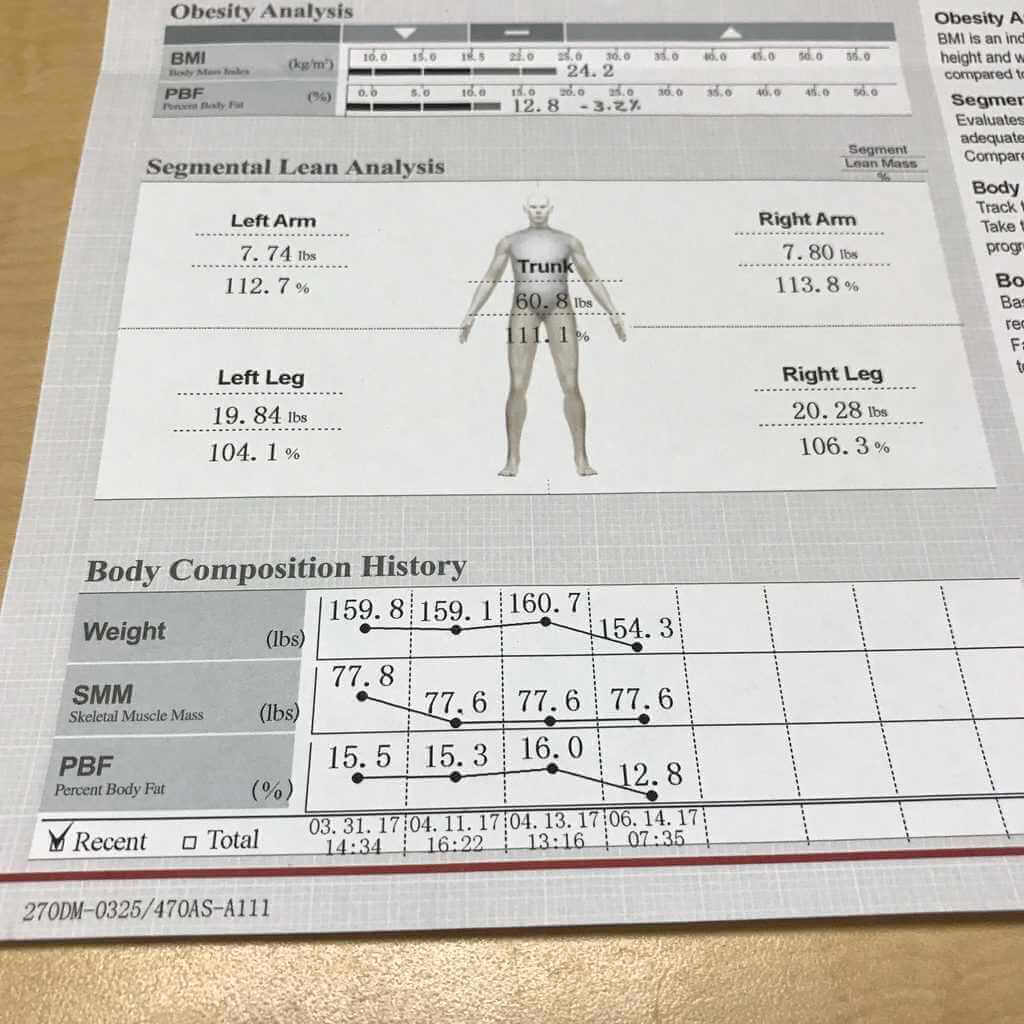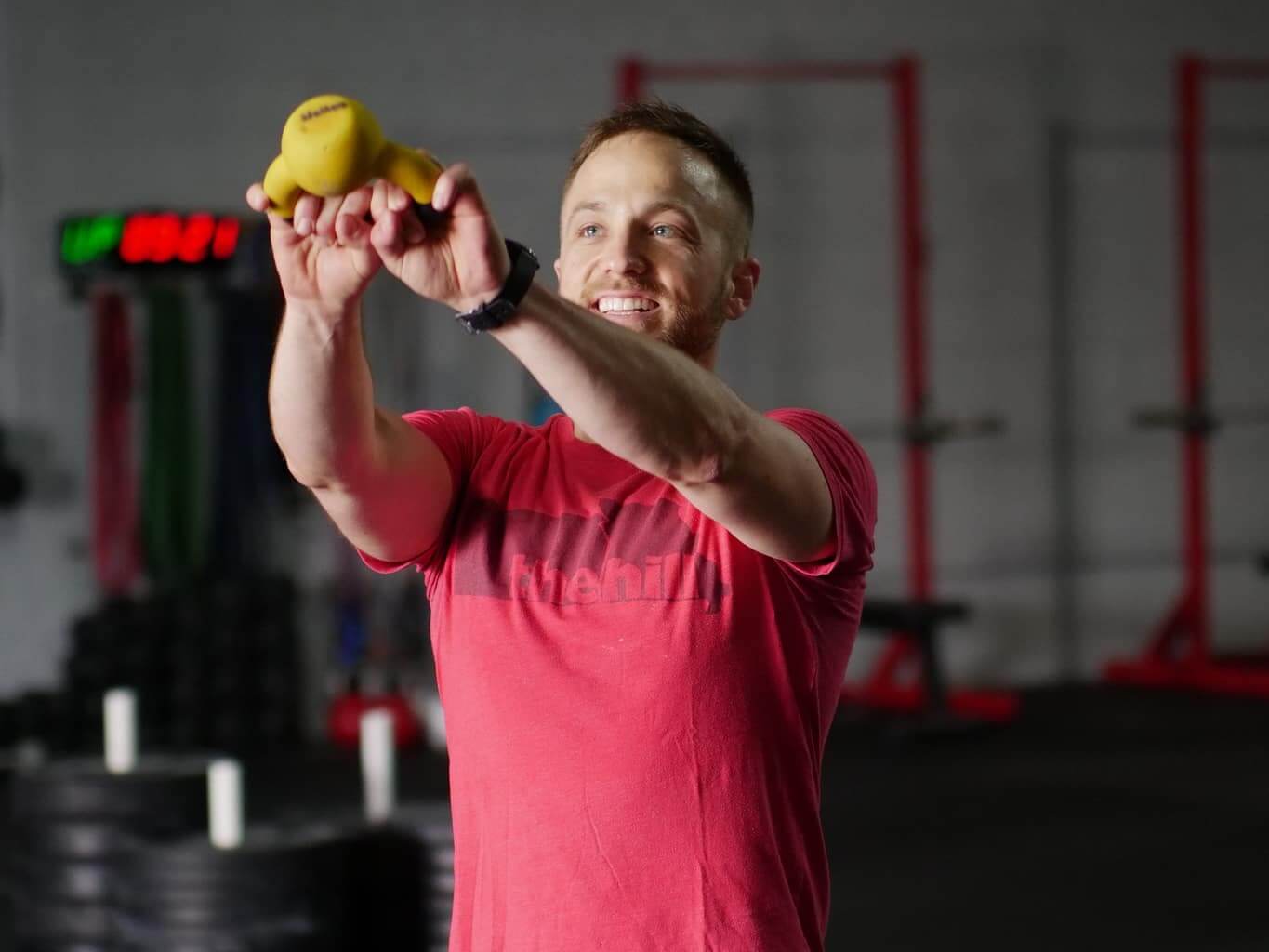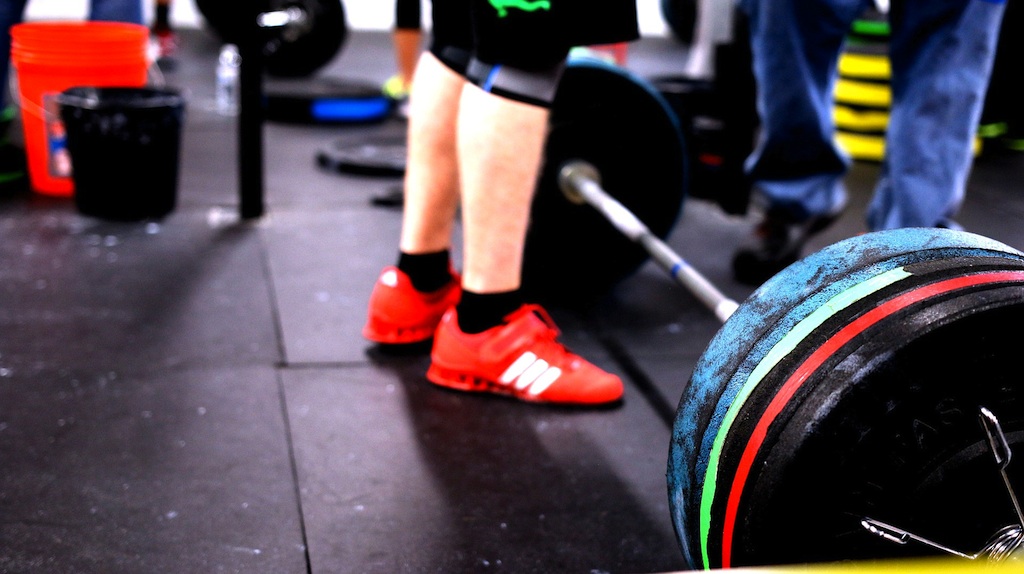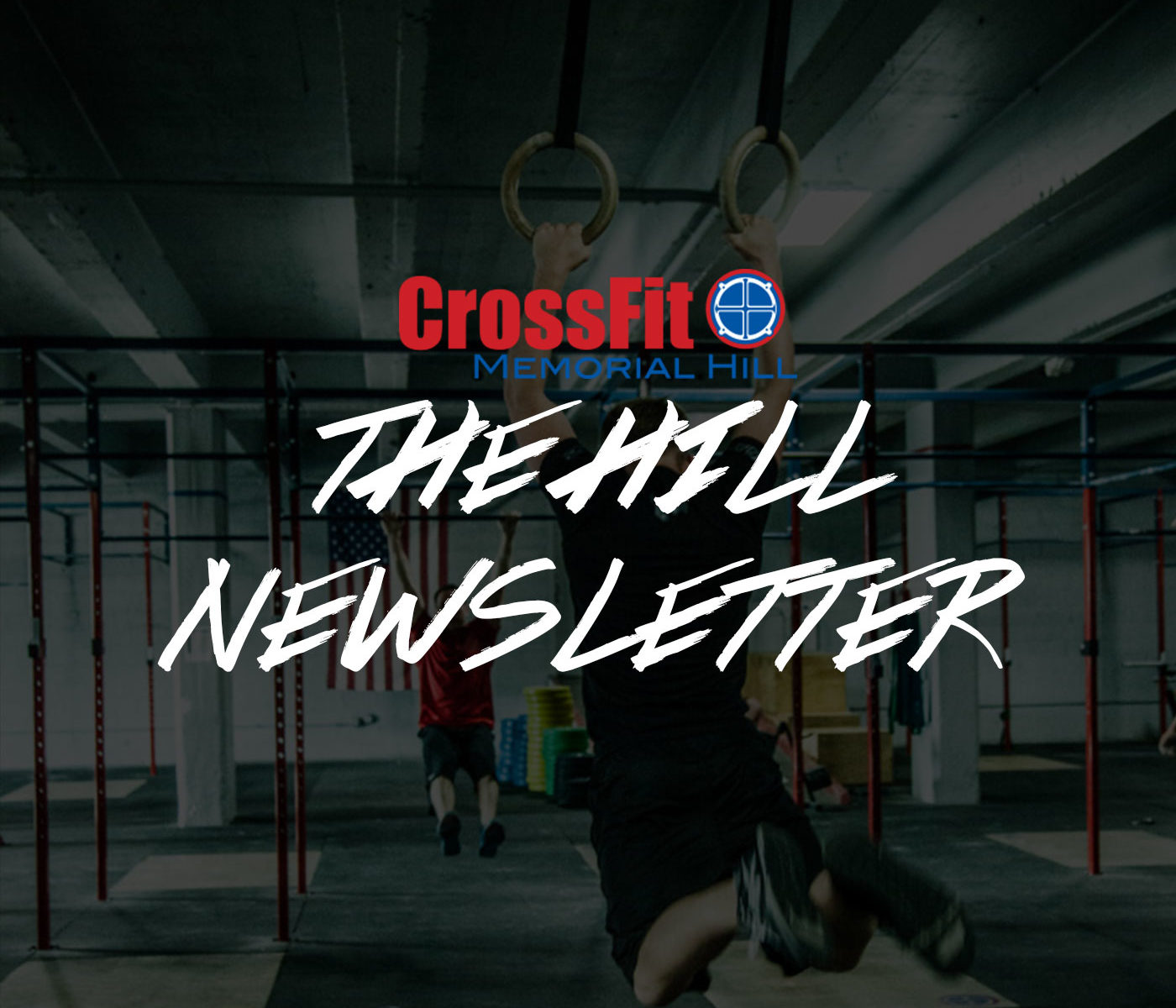Body Fat Loss > Weight Loss.
If you haven’t yet, check out this piece I wrote on why you should ditch the scale. I’ll sum it up: weight loss doesn’t matter. Body composition matters. Increasing bone density, better hydration, increased lean tissue, and reduced body fat are the things you should care about. Weight loss is useless unless you know what you’re losing. If you’re losing more than a couple pounds a week, it’s likely lean tissue or just water.
You don’t need cardio to lose body fat.
One of the biggest myths in fitness is that you need to do things you don’t like to lose fat. Mainly cardio – long runs, endless hours on the elliptical, and long bike rides. If you truly enjoy these things – by all means – don’t give them up. Fitness that’s fun is the fitness that works. Do what you love.
Lifting weights is key to fat loss
We’re going to use Coach Mindy as our case study. Over the last 9 weeks, Mindy has focused exclusively on resistance training, nutrition, hydration, and recovery. Over the course of those 9 weeks, Mindy has dropped nearly 4% body fat, increased her lean tissue by 2.5 pounds, and lost about 1.5 total pounds. By increasing her lean tissue, she’s increased her metabolism (resting metabolic rate), having a compounding effect on her fat loss.
Nutrition is simple
We tend to complicate things. Mindy made no drastic changes to her diet, but simply maintained consistency in a couple key areas:
- Eating more veggies
- Drinking adequate water
- Eating adequate protein
You don’t need to do anything drastic. You just need to maintain some semblance of consistency. It’s easy to be die-hard for 2-3 weeks. But, you won’t see any results in 2-3 weeks. Week 6 is where things really start to build up steam. Keep it simple, but keep it consistent.
There’s no magic “program”
Despite what every Instagram Coach tells you, there’s no magic combination of reps and sets that will help you look better. If you want to be generally fit, look good in a bathing suit, and feel better you just need to move consistently everyday, recover from training, and eat reasonably. That’s about it. No magic bullet or “6 Steps to 6-Pack Abs.”
Lifting weights unequivocally won’t make women “bulky”
The reason we use the InBody Body Composition Scanner is that numbers don’t lie. Often times we may “feel” one way about our body composition when the reality may be completely different. For those who are curious, Mindy has trained with a barbell everyday – doing our “Buns and Guns” program – and has eliminated any “cardio.” She didn’t get “bulky” from lifting weights – numbers don’t lie. She only increased her dry lean tissue by .9 pounds while eliminating 6 pounds of body fat. Using a segmental analysis, that means she only added ~0.3 pounds per leg and ~.15 pounds per arm of muscle tissue, BUT LOST nearly 6x that amount of body fat. The net result is a much leaner appearance although muscle mass increased.
The takeaway: fat loss is simple and weight loss is BS.
If Mindy only used a scale to measure her progress, she would only see 2.5 pounds of weight loss. The reality of her body composition is much different. A 4% reduction in body fat is a SIGNIFICANT improvement in body composition. Fat loss will improve all measurable health metrics along with a leaner physique. She accomplished this by making SMALL, sustainable changes in her diet. She did this by only lifting weights and doing ZERO “cardio.” Accounting for segmental body fat loss in her arms and legs, she actually became LESS “bulky” by adding a very small (less than 1 pound) of dry lean mass to her frame.
Check out Mindy’s progress chart:


